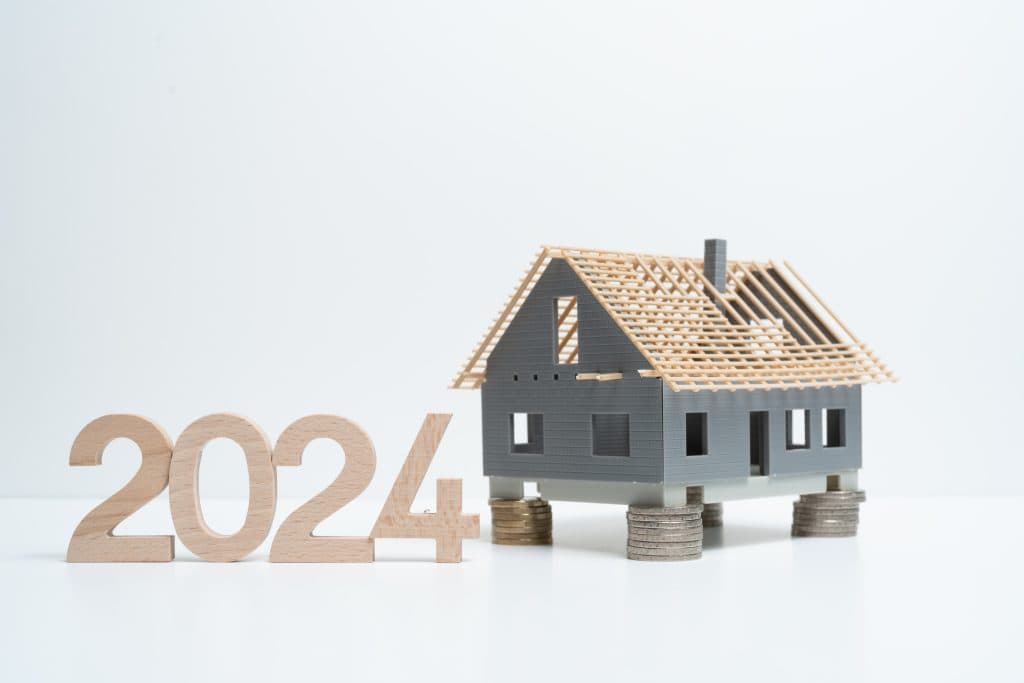Robert Dietz
NAHB Chief Economist
 Sentiment across multiple residential construction sectors is improving as 2024 begins, thanks in part to the Federal Reserve’s signaling late last year that it is done raising interest rates and macro data remaining resilient in the face of elevated interest rates.
Sentiment across multiple residential construction sectors is improving as 2024 begins, thanks in part to the Federal Reserve’s signaling late last year that it is done raising interest rates and macro data remaining resilient in the face of elevated interest rates.
This growing optimism largely stems from favorable demographic headwinds and limited resale inventory. Indeed, in the post-Covid period, new NAHB research reveals the share of young adults (ages 25 to 34) who live with their parents is posting sustained improvements following decades of increase. After registering a near 10% starting point at the turn of the century, the share of young adults living with their parents reached a peak of 22% in 2017-2018. As of the 2022 data, that share has fallen back to 19%. This is positive for both for-rent and for-sale housing demand.
A limiting factor for younger households attaining homeownership has been available inventory, both resale and new construction. The critically low levels of resale inventory, combined with multi-decade highs for interest rates, caused the 2023 volume of existing home sales to post the lowest level since 1995. As of December, at the current sales rate, unsold inventory sits at a 3.2-month supply. A balanced, efficient market should have a 4.5- to six-month supply. Due to the lack of supply, home prices continue to rise, driving the median to almost $390,000 in 2023 — a new record.
New construction can fill the gap. Combined with recent declines for mortgage interest rates (now averaging less than 6.7% compared to near 8% last October), these market conditions are supporting gains for home builder sentiment. Builder confidence in the market for newly built single-family homes climbed seven points to 44 in January, according to the NAHB/Wells Fargo Housing Market Index. This second consecutive monthly increase in builder confidence closely tracks with a period of falling interest rates.
Even as mortgage rates have fallen below 7% over the past month, many builders continue to reduce home prices to boost sales. In January, 31% of builders reported cutting home prices, down from 36% during the previous two months and the lowest rate since last August. The average price reduction in January remained at 6%, unchanged from the previous month. Meanwhile, 62% of builders offered some form of sales incentive in January. This share has remained between 60% and 62% since October.
Remodelers continue to feel positive about market conditions as well. For the fourth quarter, the NAHB/Westlake Royal Remodeling Market Index (RMI) — a measure of sentiment among professional remodelers — posted a reading of 67, increasing two points compared to the previous quarter. Even though the RMI is down slightly year over year, the index remains solidly in positive territory, a trend observed since the second quarter of 2020. Looking forward, NAHB expects market conditions to improve throughout 2024 as interest rates continue to decline.
Single-family home building activity will rebound in 2024. The December data continue to show the impacts of higher interest rates in the fall of 2023. Single-family starts decreased 8.6% to a 1.03 million seasonally adjusted annual rate but are up 15.8% compared to a year ago. The multifamily sector increased 8% to an annualized 433,000 pace for 2+ unit construction in December. Apartment construction will weaken this year because of elevated costs and limited availability for financing. On a year-over-year basis, multifamily construction is down 7.9%.
Rising construction costs have held back construction activity during the post-Covid period. While aggregate pricing has not declined, the spate of material price growth has slowed. According to the latest Producer Price Index, growth in the average price level of building materials fell from 15% in 2022 to 1.3% in 2023. On a monthly basis, building materials prices rose 0.1% in December after increasing 0.1% in November (revised). Monthly price increases averaged 0.2% in 2023, down from 1.5% in 2021 and 0.7% in 2022. Our forecast does see higher lumber costs as single-family home building rebounds.
From the big picture inflation perspective, consumer price growth has slowed but is not yet at the Fed’s monetary policy target of 2%. Overall inflation has moderated by nearly half, declining from 6.5% in 2022 to 3.4% by the end of 2023. However, even after peaking in March 2023, shelter costs continue to put upward pressure on inflation, accounting for more than two-thirds of the inflation gains. For this reason, policymakers must reduce regulatory costs associated with home and apartment construction, thereby increasing supply and taming shelter inflation as part of the overall fight again inflationary price growth.
